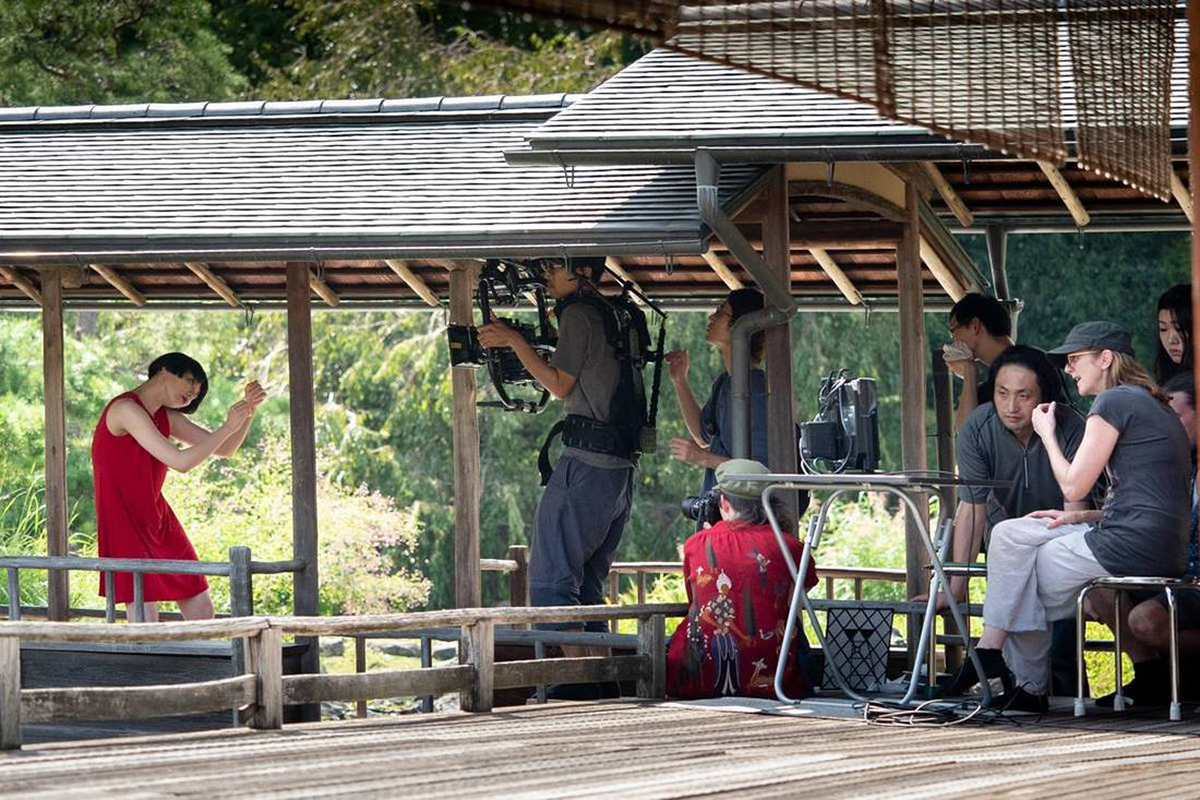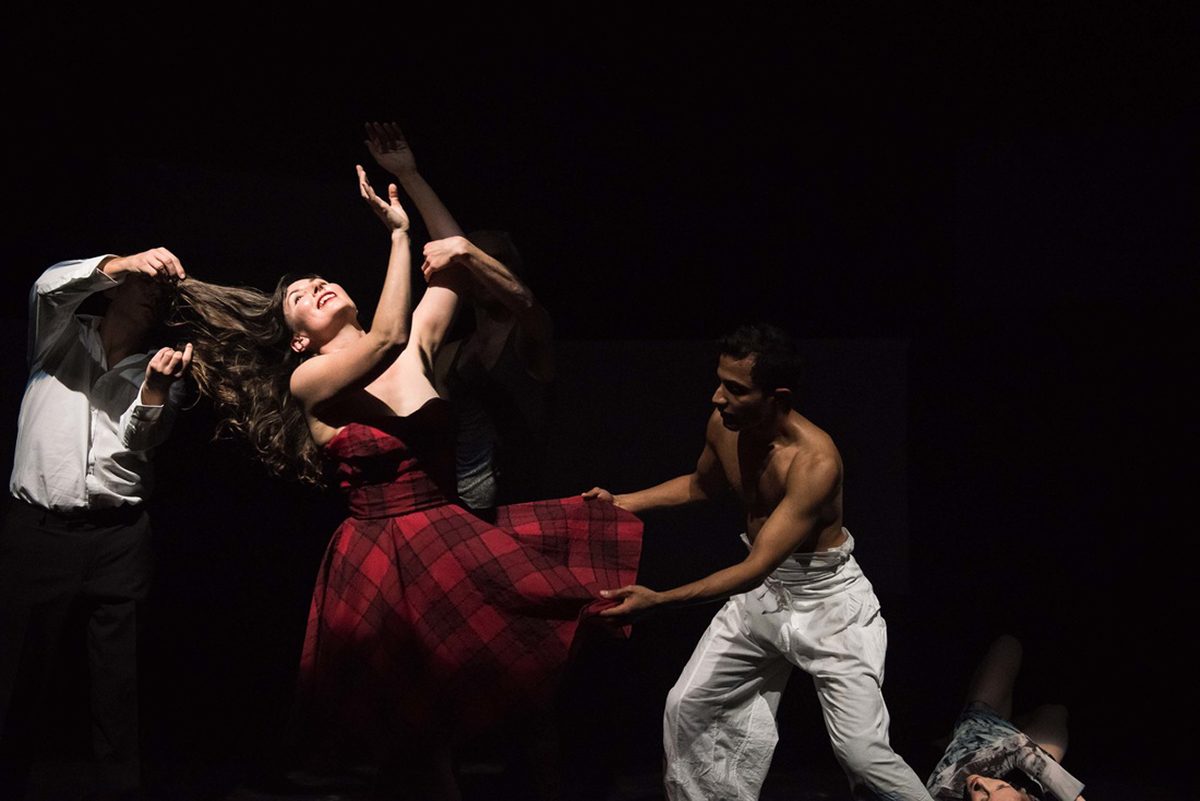
Sue Healey: Adaptation vs ephemerality
Unusually for a Platform Paper, Sue Healey’s Capturing the Vanishing: A Choreographer and Film, tells a fascinating life story. If not quite as personal as that might suggest, the essay is nonetheless an intimate tale of the organic, if sometimes chancy, evolution of an artist seeking unfettered creativity and career sustainability in the face of the predations of ephemerality. That’s a condition inherent to all creative acts but exacerbated in independent dance in Australia by cruelly short performance seasons, limited touring opportunities, declining arts funding and consequent invisibility and absence of agency: “The consequences are diminishing diversity and the reduction of new voices, as well as choreographic careers that do not find full potential.”
A multiple award-winning choreographer, Healey hybridised herself by becoming a filmmaker, finding new agency in translating stage performances into film, creating standalone dance films and installations and seeking out new niches, with notable success in Asia. Healey has not only strengthened the durability of her practice but in eloquent portrait series has generously preserved the creativity and legacies of fellow and elder practitioners. In doing so she has deftly managed the ephemerality anxiety that has driven her to adapt and which fuels this passionate essay, in which she asks, “How can film capture the visceral organic reality of live performance and take us beyond the vanishing point?”
Healey briskly evokes her emergence as dancer and choreographer prior to her filmmaking commencing with a 1980s New Zealand childhood (her father’s Super 8 films, her former ballerina mother’s magical dancing in the family home), finding the dance—not ballet— that works for her, training at Melbourne’s VCA, performing with Nanette Hassel’s Danceworks (to frustratingly conservative responses), in the studio with Merce Cunningham and other luminaries for several inspiring years in New York, returning to newly invigorated Melbourne dance and becoming director of Vis-à-Vis Dance in Canberra (1993–95), until a savage funding cut propelled her into the life of an independent choreographer.
The account of her subsequent career across the balance of the essay entwines Healey’s evolving attraction to filmmaking and her corresponding adaptation, via film, to a rapidly mutating contemporary dance world of cross-artform and new media-driven ventures, with dance more than any other artform leading the way in the 90s. Healey had sensed the change already in the dance and visual arts and experimental films of the American post-moderns in the 80s: “Meredith Monk, Trisha Brown, Steve Paxton and Yvonne Rainer. This made sense to me, as did the pioneering experimental films of Maya Deren, the New Zealander Len Lye and Merce Cunningham with Charles Atlas. My interest was there, I just didn’t know how I could achieve it.”
What’s particularly interesting in Healey’s evolution as dance filmmaker is its phenomenological dimension: her coming to precisely understand her engagement with movement, learning the value of new visual perspectives, putting herself behind the camera, sensing the passage of choreography to film as ‘translation,’ discovering editing as a form of choreography, learning what film can reveal and the stage cannot, and understanding that her filmmaking is a whole-body creative experience.
Healey’s connection with film began in the early 1990s working with experimental filmmaker Louise Curham who drew attention to both detail “at a deeper level” and framing: “I realised as a choreographer that I was more concerned with movement, my eye always moved quickly to the next shape rather than focusing on visual detail.” A workshop in New York with renowned American lighting designer Jennifer Tipton, in which “the choreographers had to design lighting states for the designers, who then had to choreograph and perform within our lighting,” taught Healey “the strategy of coming at creative ideas from a reverse perspective and realising the importance of widening my scope into other forms—a pivotal ‘aha’ moment for me.”
Another reversal of perspective, when a “constant switching of focus between dance and film became a necessary part of my process,” emerged from Microdance in 1996. In enlightened times by today’s standards, Healey and Curham were one of four teams granted $100,000 each by an Australia Council, Australian Film Commission and the ABC initiative: “Making Slipped was a watershed moment. I realised that to understand the process more fully, I would have to move to the other side of the camera. I began to make short films in conjunction with every live work I made, simply by using my own small camera. This way I was able to explore in the studio with the dancers before bringing in a professional cinematographer for the actual shoot.” In a crucial development, Healey’s collaboration with cinematographers in 2002-13 “also extended to dancers Shona Erskine, Lisa Griffiths, Nalina Wait and later Rachelle Hickson,” who, rather than being ‘choreographed on’, “quickly developed an ability to understand the dimensions of the frame from a dancer’s perspective, and how the camera saw the body in space, and choreographed themselves efficiently into a dialogue with the camera.”
Healey writes intriguingly of the act of dance filmmaking: “When it is working well, I enter into a non-verbal state akin to seeing with my whole body rather than just my eyes—of conjuring up the ‘right’ image in the ‘right’ place at the ‘right’ time, and always underpinned by the question—does it move me? Physically, emotionally and intellectually?” However, she also came to realise that film editors “held the choreographic power. I needed to become an editor myself and master this skill…”
Healey’s gradual transformation into consummate director and editor, in team with cinematographer, dancers and composer, has confirmed her “realisation that the screen could be a specific site” for dance, no mere substitute for the stage.
From 2000 to 2012 Healey and many other dance filmmakers had been supported in a significant niche, the Sydney-based Reeldance International Dance on Screen Festival, which encouraged innovation and provided a platform with international connections: “But funds were eventually cut and Reeldance ceased operations in 2012, just as many of us were ready to go further. The void left in the wake of this closure is still apparent today.”
in the current decade Healey has radically diversified the techniques, forms and scale of her creations. En route (2017) was a commissioned work for Wynscreen, a 22-metre wide by three-metre high LED screen in Sydney’s Wynyard train station. Virtuosi (2013), a feature-length “creative documentary” about dancers and place was created “akin to making dance—a situation is framed and investigations are undertaken through improvisation—in a sense, a controlled uncontrollability.” The Golds (2014), about notable dancers 60-90 years of age, offered revived visibility and creative opportunity. “These documentary films opened many doors for me internationally, screening in over fifty cities around the world and even subtitled into different languages: Spanish, Portuguese, Cantonese and Mandarin.”
In her on-going ‘portraiture’ series, On View (2013-present), Healey has further pursued a phenomenological preoccupation: “dancers are intrinsically viewed in the course of their work, and they also see the world in a particular way. The idea of ‘seeing and being seen’ is embedded in the work, setting up an intimate and dynamic agency between the observed and the observer.” Having worked across Asia since the 1990s, Healey has extended On View into the region, to climax in 2020 with a production produced by West Kowloon Cultural District (Hong Kong), Aichi Arts Centre (Japan) and Performance Space (Sydney) which will then tour Asia and Sydney.
Healey says of the project that it “breaks the idea that an Australian independent artist must work at a small scale. It has given my work a visibility and viability beyond anything I have ever experienced before. I am also cognisant of the fact that without the interdisciplinary nature of this project, it simply would not have happened.” This acknowledgement underlines the organic evolution of Healey’s 30-year career, one utterly contemporaneous with a great shift in art-making in general and not least in dance, in which she had been both participant and generator.
Cognisant of the struggles ahead of her, her peers and especially a younger generation of artists, Healey concludes her essay with three necessary provocations, one urging equitable government support for independent dance artists, another encouraging debate about the relevance of dance in order to create a vision for sustainability, and this: “Dance must extend its boundaries without losing sight of its own intrinsic qualities as a discipline.” It’s a reminder that however far Sue Healey has taken her practice to the screen as a legitimate site for dance, the filmmaker is always first a choreographer—at one with her dance and screen collaborators.
Young artists, in particular, will value Capturing the Vanishing for its generous, engagingly crafted account of the challenges and breakthroughs involved in sustaining and expanding a career in dance. Emerging and established choreographers will find encouragement to boldly make dance in new ways by reaching out beyond their immediate discipline; Healey cites two younger artists already on this trajectory. As well, the many links to excerpts from Healey’s films that can be activated in the PDF version of the essay make for exciting reading, heightening the sense that Sue Healey has held the vanishing, of dance and career, firmly in check.
You’ll find more about Sue Healey on her extensive website and in RealTime. She is also one of the subjects of the book Bodies of Thought: 12 Australian Choreographers (Wakefield Press-RealTime, 2014).
You can purchase a hard copy or PDF of Capturing the Vanishing here.
For more on dance and editing from a dance filmmaker perspective see Anna Dzenis’ “Editing: beyond intuition,” a review of Karen Pearlman’s Cutting Rhythms: Shaping the Film Edit (Focal Press, Burlington US, Oxford UK, 2009).
–
Platform Papers, No 60, Sue Healey, Capturing the Vanishing: A Choreographer and Film, Currency House, Sydney, August, 2019
Top image credit: On View: Sue Healey (right) and crew on Japan shoot, Nagoya, photo Hatori Naoshi







